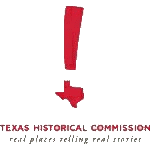




Milam County Historical Commission
Milam County, Texas
Milam County, Texas
All Credit for this article
goes to Susan Chandler
and the
Temple Daily Telegram
goes to Susan Chandler
and the
Temple Daily Telegram

Cyril and Methodius: Moravian Missionaries
by Susan Chandler
Lifestyles & Entertainment Editor
Temple Daily Telegram - May 26, 2014
The Moravians
This article is one of a series looking at the culture and descendants of the Czechs who immigrated in large numbers at the turn of the last century to Bell, Milam and Williamson counties.
Many Czech communities around the U.S. have Catholic churches named St. Cyril and Methodius.
Who are the people behind these curious names and why do Czechs dedicate their churches to them?
Cyril and Methodius are both secular and religious heroes in the Moravia region of today’s Czech Republic.
They were ninth-century missionaries who enlightened the area by codifying both language and law for the people of Moravia.
In 1980, Pope John Paul II named them co-patrons of Europe.
In 2013, the government of the Czech Republic and the Catholic Church formed an unusual partnership to celebrate 1,150 years since the arrival of Cyril and Methodius to Moravia.
That’s one thousand, one hundred fifty years.
Hard to imagine to our American minds.
Elaborate ceremonies and a Mass were held at Velehrad, where the missionaries began their work.
Seated in front as honored guests were West natives Raymond Snokhous and his wife, Clarice. Snokhous is the Honorary Consul General of the Czech Republic for the State of Texas.
The Snokhouses were also among the more than 100 persons packing the room on Thursday night in Temple for the “All Things Czech” lecture series at the SPJST home office.
The event was the third in the series of topics about Czech and Czech-American culture and history.
SPJST stands for Slovanska Podporujici Jednota Statu Texas or Slavonic Benevolent Order of the State of Texas. It was founded in 1897 by early Czech immigrants as a fraternal benefit society.
Father Lukas Jambor of the Diocese of Olomouc in the Moravia region of the Czech Republic gave a presentation of the history of Cyril and Methodius, explaining the significance of their work to the Moravians and to Europe.
He also played clips from a four-hour docudrama mini-series made for the anniversary titled, “Cyril and Methodius, Apostles to the Slavs.” A trailer with English subtitles is vailable online at YouTube.com and vimeo.com.
Father Jambor was introduced by Father Stephen Nesrsta, pastor of Holy Trinity Catholic Church of Corn Hill and Sts. Cyril and Methodius Church at Granger. Father Nesrsta was pastor of St. Mary’s Catholic Church from 1995 to 2003. Father Paul Chovanec led the audience in singing a Czech hymn dedicated to Cyril and Methodius.
Father Chovanec is pastor of St. Justin Martyr Catholic Church in Houston.
Cyril and Methodius were two brothers born in Thessalonica, Macedonia in 827 and 869, respectively. They learned the Slavic language, it is believed, from their mother.
Cyril was born Constantine and lived by that name until just before his death, when he entered a monastery and changed it.
The two were outstanding scholars and linguists.
The historical country of Great Moravia at the time was ruled by Prince Rostislav. Rostislav did not trust the Bavar- ian priests who were working and expanding in his country and wanted to counteract their influence. He asked church leaders both in Rome to the west and Constantinople to the east to send missionaries.
Rome did not respond, but the Greeks did. Emperor Michael III and church patriarch Photius sent Cyril and Methodius.
Moravians had no written language and Bavarian priests celebrated Mass entirely in Latin, including Bible readings. Since the people were not allowed to hear the scriptures in their own tongue, there was little understanding of the faith. This afforded the Bavarians quite a bit of control, since they could arbitrarily interpret the scripture to their congregations.
Cyril developed an alphabet for the Moravian language based on his native Greek, but with some added letters to represent unique sounds. He used the symbol of a Christian cross for the letter A, a reminder of the primary purpose of his work, to give the Moravians the Bible in their own language. His work was much like the Wycliffe missionary linguists today, who live among people for decades to develop a written language and bring literacy to whole people groups.
Methodius created a written code of law for the land, something it had lacked. Without this, nobles could rule at their own pleasure and whim.
Prince Rostislav adopted the linguistic work and implemented Methodius’ code of law.
Cyril’s practice of saying Mass in the Moravian language angered the Bavarians, who actively opposed and persecuted Cyril and Methodius until their death and even afterward. When Prince Rostislav was overthrown, the Bavarians destroyed the linguistic works and exiled Cyril’s students and disciples from the country.
Afterward, Pope Stephen V forbade the use of the Slavonic liturgy and required Mass in Latin. However, the exiled students took the work to other countries, one reason that so many Slavic languages still use a form of Cyril’s alphabet today, the Cyrillian Alphabet.
The Greek Orthodox church canonized Cryil and Methodius soon after their deaths. The Roman Catholic Church followed suit in 1880.
.
by Susan Chandler
Lifestyles & Entertainment Editor
Temple Daily Telegram - May 26, 2014
The Moravians
This article is one of a series looking at the culture and descendants of the Czechs who immigrated in large numbers at the turn of the last century to Bell, Milam and Williamson counties.
Many Czech communities around the U.S. have Catholic churches named St. Cyril and Methodius.
Who are the people behind these curious names and why do Czechs dedicate their churches to them?
Cyril and Methodius are both secular and religious heroes in the Moravia region of today’s Czech Republic.
They were ninth-century missionaries who enlightened the area by codifying both language and law for the people of Moravia.
In 1980, Pope John Paul II named them co-patrons of Europe.
In 2013, the government of the Czech Republic and the Catholic Church formed an unusual partnership to celebrate 1,150 years since the arrival of Cyril and Methodius to Moravia.
That’s one thousand, one hundred fifty years.
Hard to imagine to our American minds.
Elaborate ceremonies and a Mass were held at Velehrad, where the missionaries began their work.
Seated in front as honored guests were West natives Raymond Snokhous and his wife, Clarice. Snokhous is the Honorary Consul General of the Czech Republic for the State of Texas.
The Snokhouses were also among the more than 100 persons packing the room on Thursday night in Temple for the “All Things Czech” lecture series at the SPJST home office.
The event was the third in the series of topics about Czech and Czech-American culture and history.
SPJST stands for Slovanska Podporujici Jednota Statu Texas or Slavonic Benevolent Order of the State of Texas. It was founded in 1897 by early Czech immigrants as a fraternal benefit society.
Father Lukas Jambor of the Diocese of Olomouc in the Moravia region of the Czech Republic gave a presentation of the history of Cyril and Methodius, explaining the significance of their work to the Moravians and to Europe.
He also played clips from a four-hour docudrama mini-series made for the anniversary titled, “Cyril and Methodius, Apostles to the Slavs.” A trailer with English subtitles is vailable online at YouTube.com and vimeo.com.
Father Jambor was introduced by Father Stephen Nesrsta, pastor of Holy Trinity Catholic Church of Corn Hill and Sts. Cyril and Methodius Church at Granger. Father Nesrsta was pastor of St. Mary’s Catholic Church from 1995 to 2003. Father Paul Chovanec led the audience in singing a Czech hymn dedicated to Cyril and Methodius.
Father Chovanec is pastor of St. Justin Martyr Catholic Church in Houston.
Cyril and Methodius were two brothers born in Thessalonica, Macedonia in 827 and 869, respectively. They learned the Slavic language, it is believed, from their mother.
Cyril was born Constantine and lived by that name until just before his death, when he entered a monastery and changed it.
The two were outstanding scholars and linguists.
The historical country of Great Moravia at the time was ruled by Prince Rostislav. Rostislav did not trust the Bavar- ian priests who were working and expanding in his country and wanted to counteract their influence. He asked church leaders both in Rome to the west and Constantinople to the east to send missionaries.
Rome did not respond, but the Greeks did. Emperor Michael III and church patriarch Photius sent Cyril and Methodius.
Moravians had no written language and Bavarian priests celebrated Mass entirely in Latin, including Bible readings. Since the people were not allowed to hear the scriptures in their own tongue, there was little understanding of the faith. This afforded the Bavarians quite a bit of control, since they could arbitrarily interpret the scripture to their congregations.
Cyril developed an alphabet for the Moravian language based on his native Greek, but with some added letters to represent unique sounds. He used the symbol of a Christian cross for the letter A, a reminder of the primary purpose of his work, to give the Moravians the Bible in their own language. His work was much like the Wycliffe missionary linguists today, who live among people for decades to develop a written language and bring literacy to whole people groups.
Methodius created a written code of law for the land, something it had lacked. Without this, nobles could rule at their own pleasure and whim.
Prince Rostislav adopted the linguistic work and implemented Methodius’ code of law.
Cyril’s practice of saying Mass in the Moravian language angered the Bavarians, who actively opposed and persecuted Cyril and Methodius until their death and even afterward. When Prince Rostislav was overthrown, the Bavarians destroyed the linguistic works and exiled Cyril’s students and disciples from the country.
Afterward, Pope Stephen V forbade the use of the Slavonic liturgy and required Mass in Latin. However, the exiled students took the work to other countries, one reason that so many Slavic languages still use a form of Cyril’s alphabet today, the Cyrillian Alphabet.
The Greek Orthodox church canonized Cryil and Methodius soon after their deaths. The Roman Catholic Church followed suit in 1880.
.